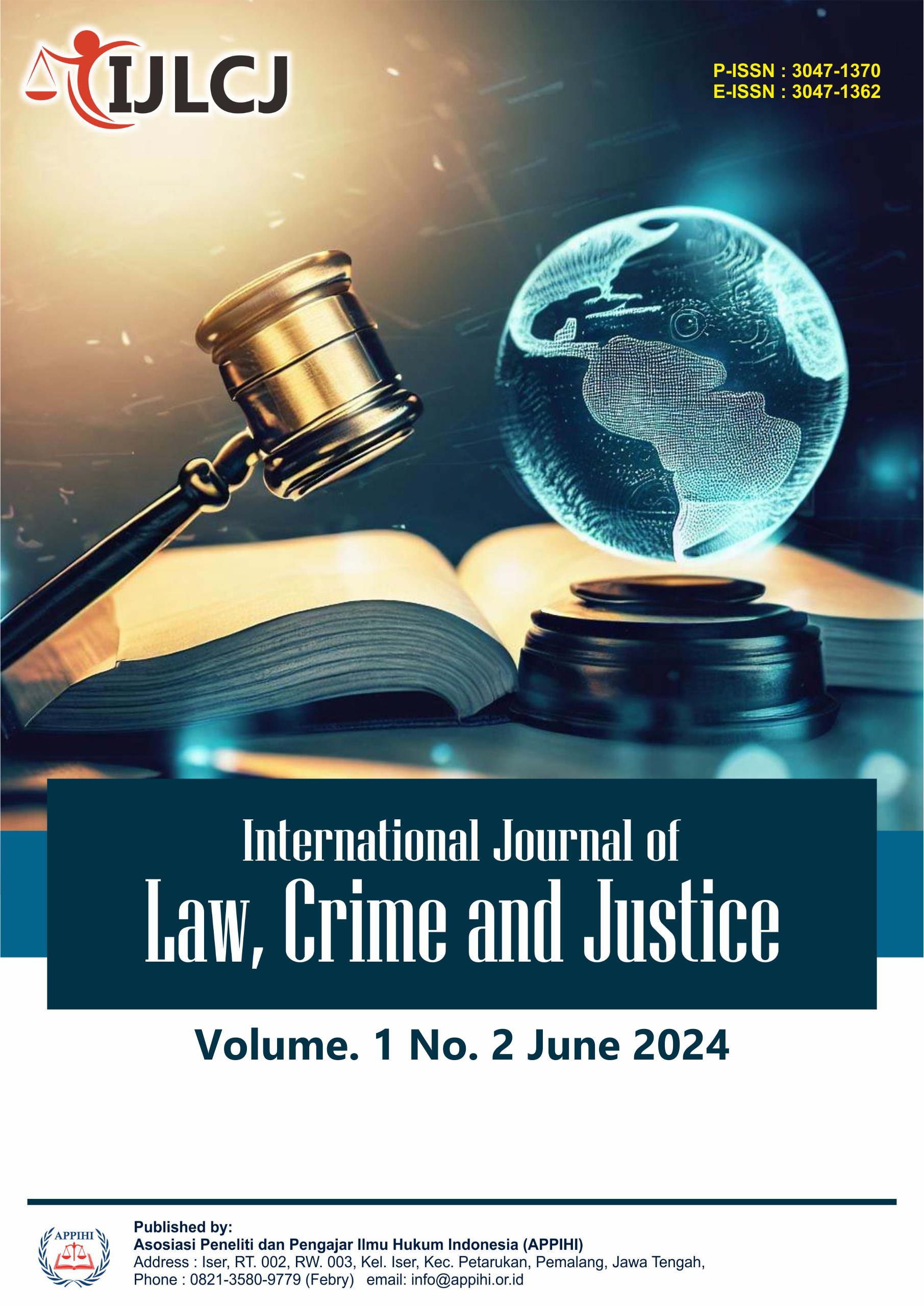Legal Study of Developer Responsibility for Bad Credit within the Framework of Law no. 1 of 2011
DOI:
https://doi.org/10.62951/ijlcj.v1i2.84Keywords:
Responsibility, Developer, Housing LoansAbstract
The development of housing credit provided by the North Lampung Matrix Housing Developer sometimes gives rise to bad credit problems, where the realization of the credit provided does not reach the predetermined target. This can affect North Lampung Matrix Housing activities and impact developer accountability. What is the developer's responsibility for credit in accordance with Law Number 1 of 2011 concerning Housing and Settlement Areas in Matrix Housing in North Lampung? The research results show that the developer's responsibility for credit in accordance with Law Number 1 of 2011 concerning Housing and Settlement Areas at Matrix Housing in North Lampung includes the obligation to collect debtors who experience problematic credit who collaborate with the developer. North Lampung Matrix Housing Partners Bank, basically this obligation has not been specifically regulated in the banking law and still uses general rules such as the Banking Law, Civil Code and Law Number 40 of 2007 concerning Limited Liability Companies. The absence of special "lex specialis" regulations is a weakness in responsibility when bad credit occurs. All components of North Lampung Matrix Housing have juridical responsibility for all operational activities. Resolving problem loans at Matrix Housing in North Lampung can be done in two ways, namely litigation efforts through the courts and non-litigation efforts through preventive measures such as anticipating the emergence of bad credit, early warning and negotiation.
Downloads
References
Ansory, G. (2006). Pokok-pokok hukum perjanjian di Indonesia. Yogyakarta: Citra Media.
Badrulzaman, M. D., et al. (2001). Kompilasi hukum perikatan. Bandung: Citra Aditya Bakti.
Baihaqi, A. (1998). Pembinaan dan pengembangan bahasa, Kamus Besar Bahasa Indonesia. Jakarta: Balai Pustaka.
Dirdjosisworo, S. (2002). Kontrak bermasalah. Mandar Maju, Bandung, Jakarta: IBI.
Echols, J. M., & Shadily, H. (2003). Kamus bahasa Inggris, An English-Indonesian dictionary. Jakarta: PT. Gramedia.
Friedman, L. M. (1993). Teori dan filsafat hukum: Telaah kritis atasi teori-teori hukum (Susunan I). (Edisi kedua). Jakarta: PT. Raja Grafindo Persada.
Hernoko, A. Y. (2010). Hukum perjanjian: Asas proposionalitas dalam kontrak komersial. Jakarta: Kencana.
Ibrahim, J., & Sewu, L. (2003). Hukum bisnis dalam persepsi manusia modern. Bandung: Refika Aditama.
Kartini, M., & Widjaja, G. (2007). Perikatan yang lahir dari perjanjian. Jakarta: Raja Grafindo Persada.
Kusumaatmadja, M. (2002). Asas-asas hukum di Indonesia. Bandung: Refika Aditama.
Marwan, M. (2009). Law dictionary (Complete Edition). Reality Publisher.
Meliala, D. S. (2007). Perkembangan hukum perdata tentang benda dan hukum perikatan. Bandung: Nuansa Aulia.
Muis, A. (2009). Bunga rampai hukum dagang. Medan: Medan Area Press.
Muis, A. (2012). Hukum persekutuan dan perseroan. Medan: Medan Area Press.
Munir, F. (2003). Hukum kontrak, dari sudut pandang hukum bisnis (Buku kedua, Cet. 2). Bandung: Citra Aditya Bakti.
Munir, F. (2005). Hukum bisnis dalam teori dan praktek (Buku ke satu). Bandung: Citra Aditya Bakti.
Salim, H. S. (2009). Hukum kontrak (Teori dan teknik penyusunan kontrak). Jakarta: Sinar Grafika.
Saragih, D. (2012). Pokok-pokok hukum perikatan. Yogyakarta: Airlangga Pers.
Simamora, Y. S. (2012). Prinsip hukum kontrak dalam pengadaan barang dan jasa oleh pemerintah. Jakarta: Gramedia.
Simanjuntak, P. N. H. (2009). Pokok-pokok hukum perdata Indonesia. Jakarta: PT. Djambatan.
Suhawardi, L. (2000). Hukum ekonomi Islam. Jakarta: Sinar Grafika.
Downloads
Published
How to Cite
Issue
Section
License
Copyright (c) 2024 International Journal of Law, Crime and Justice

This work is licensed under a Creative Commons Attribution-ShareAlike 4.0 International License.





